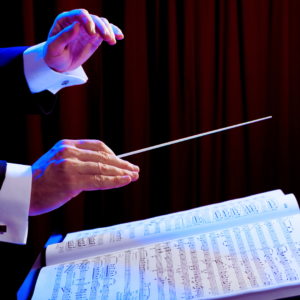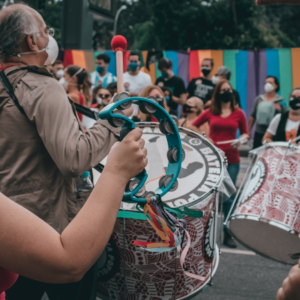Throughout history, female artists have often faced significant barriers to their recognition and success due to prevailing societal norms. Despite these challenges, many have made profound contributions to the art world, influencing both their contemporaries and future generations. Celebrating the achievements of these women not only highlights their creativity but also emphasizes the importance of representation and equality in artistic expression.
From the early works of Artemisia Gentileschi to the modern installations of Yayoi Kusama, women have continually reshaped the landscape of art. Their unique perspectives often reflect identity and empowerment, introducing new narratives that challenge traditional views. Each story serves as a reminder of the resilience and talent present in female artistry throughout the ages.
Recognizing and honoring these artists fosters a deeper understanding of art history. It allows appreciation of the diverse voices that have contributed to the richness of creativity. By celebrating their legacies, society acknowledges the vital role women play in shaping cultural dialogues and promotes a more inclusive future for artists of all genders.
Pioneers of Female Artistry
Female artists have played crucial roles in shaping art movements throughout history, often challenging societal norms and gender biases. This section highlights the contributions of female pioneers in the Baroque period and the Impressionist movement, illustrating their impact and legacy.
Baroque Trailblazers
In the Baroque period, Artemisia Gentileschi emerged as a significant figure. Her powerful painting, Judith Slaying Holofernes, showcases her mastery of dramatic composition and emotional depth.
Sofonisba Anguissola also made her mark as a prominent Italian Baroque painter. She gained recognition for her innovative portraiture that drew on her personal experiences and female perspective.
Angelica Kauffman was another noteworthy artist. A founding member of the Royal Academy, her neoclassical works reflect both her talent and her ability to navigate and excel in a male-dominated field.
These women not only created exceptional art but also paved the way for future female artists to follow.
Impressionism and Beyond
The Impressionist movement saw transformative contributions from artists such as Mary Cassatt and Berthe Morisot.
Mary Cassatt focused on the intimate lives of women and children, capturing their everyday moments with a sensitive touch. Her works were prominently displayed in the Paris Salon, gaining her recognition among her peers.
Meanwhile, Berthe Morisot, known for her light-filled compositions, pushed against the gender biases of her time. She often portrayed domestic scenes, challenging traditional representations of women in art.
Together, these artists not only contributed to the Impressionist movement but also helped redefine the role of women in the art world, creating a lasting legacy for future generations.
Shaping Identity Through Art
Art has long been a medium through which female artists express their unique identities and advocate for social change. This section explores how self-portraits and creative expressions shape personal and collective identities and the intersection of art with activism in the fight for gender equality.
Expressing the Self
Frida Kahlo’s self-portraits are a profound exploration of identity, pain, and personal history. Her work often incorporates elements of Mexican culture and her tumultuous relationship with Diego Rivera, reflecting her struggles and resilience.
Kahlo’s bold colors and symbolism reveal her complex identity while challenging traditional representations of women. In a similar vein, Georgia O’Keeffe, known as the “Mother of American Modernism,” captured the essence of femininity through her flower paintings, presenting a strong yet delicate view of women’s identity. Both artists emphasize the significance of individual experience in defining one’s self.
Art and Activism
Art has been an important platform for promoting women’s rights and gender equality. Judith Leyster was a prominent Dutch painter who used her work to challenge the conventional roles of women in society. She gained recognition in a male-dominated art world, paving the way for future female artists.
Contemporary female artists continue this tradition, using their work to address social issues and advocate for change. Their art, whether through painting, sculpture, or performance, serves as a powerful voice for marginalized communities, ensuring women’s perspectives are heard and valued in the ongoing discourse for equality.
Contemporary Voices and Visions
Contemporary female artists are reshaping the art world with innovative techniques and diverse perspectives. Their work challenges traditional boundaries and introduces fresh dialogues in artistic expression.
Breaking the Boundaries
Yayoi Kusama is renowned for her immersive installations that explore themes of infinity and the self. Her polka dot motifs and mirrored environments invite viewers into her unique vision of abstraction. This approach allows audiences to engage deeply with her work, reflecting on personal and collective experiences.
Cindy Sherman, known for her conceptual photography, questions identity and representation through her portraits. By embodying various characters, she critiques societal norms and exposes the performative aspects of gender.
Kara Walker tackles complex narratives surrounding race and identity using silhouettes. Her provocative imagery prompts critical conversations about historical and contemporary racial issues, pushing boundaries in thematic explorations.
Innovative Transformations
Hilma af Klint’s pioneering work laid the groundwork for abstract art, yet her contributions remained largely unrecognized until recent years. Her colorful compositions convey spiritual and philosophical ideas, offering a transformative lens to modern abstraction.
Mickalene Thomas combines photography and painting to explore femininity and the African American experience. Her layered works celebrate diversity and challenge conventional beauty standards, presenting narratives of empowerment and self-discovery.
These artists exemplify how contemporary female voices expand the dialogue within the art world. Their varied backgrounds and distinct styles contribute to a richer understanding of artistic expression today.
Recognition and Resurgence
The acknowledgment of female artists has seen significant changes over time, leading to a resurgence of interest in their contributions. Art lovers and institutions are now focusing on representation, showcasing the resilience of women in the arts.
Revisiting the Classics
Recent exhibitions have focused on the rediscovery of classic works by female artists. Artists like Artemisia Gentileschi and Georgia O’Keeffe are gaining renewed attention. Their unique perspectives and the challenges they faced in predominantly male environments are being highlighted.
Collections that feature their work are not only educational but also celebrate their influence on modern art. This renewed focus invites viewers to appreciate the depth and complexity of their contributions. By revisiting these classics, institutions are reintegrating these artists into the broader narrative of art history.
Exhibiting Excellence
Exhibiting female artists has become a priority for galleries and museums. Events like the Women Artists Visibility Project aim to rectify historical neglect. These exhibitions often feature diverse mediums, showcasing painters, sculptors, and performers.
Such initiatives encourage dialogue among art lovers and promote a deeper understanding of women’s roles in artistic movements. They highlight the importance of representation, ensuring that future generations recognize the numerous achievements of female artists. Through these efforts, the art world is gradually correcting past oversights.





